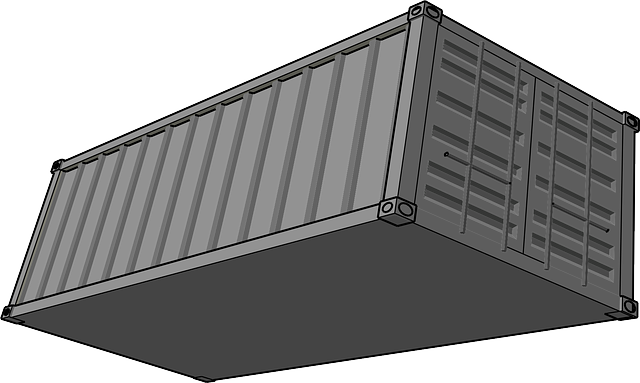Leveraging technology is a game-changer for businesses seeking cargo insurance savings in international trade. Through advanced online tools and comparison engines, companies can access real-time quotes, compare policies based on shipment details, risk profiles, and coverage needs, and secure tailored, cost-effective solutions. This data-driven approach, aided by AI integration, promises significant future cost reductions for both insurers and shippers in the evolving digital landscape of cargo insurance.
In today’s digital era, leveraging technology has become pivotal for businesses seeking to optimize costs, especially in sectors like cargo transportation. This article explores how technological advancements enable efficient comparison and selection of cost-effective cargo insurance policies. We delve into strategies such as data analytics and online platforms that unlock significant savings potential. By understanding cargo insurance savings and embracing digital transformation, businesses can navigate the market effectively and maximize their protections while minimizing expenses.
Understanding Cargo Insurance Savings: Unlocking Potential Benefits

Understanding Cargo Insurance Savings is a pivotal step in unlocking significant potential benefits for businesses engaged in international trade. By leveraging technology, companies can now access advanced tools designed to compare and select cost-effective policies. These digital solutions enable thorough analysis of various cargo insurance options, factoring in elements like shipment value, risk profiles, and geographical coverage. This data-driven approach ensures that every policy choice aligns with specific business needs while maximizing savings.
One of the key advantages is the ability to identify hidden cost efficiencies. Traditional methods often left businesses unaware of substantial discounts available through specialized cargo insurance providers or by bundling multiple policies. Technology bridges this gap, providing transparent insights into these savings opportunities. Moreover, it facilitates dynamic comparisons, allowing businesses to adjust parameters in real-time and observe immediate impacts on premium costs. This flexibility empowers companies to make informed decisions that go beyond mere cost reduction, ensuring comprehensive risk management tailored to their global operations.
The Digital Transformation: Tools for Efficient Policy Comparison

The digital transformation has brought about a revolution in how we access and manage information, and this shift is no stranger to the world of insurance. When it comes to cargo insurance savings, technology offers powerful tools that streamline the process of comparing policies. Online platforms and comparison engines have made it easier than ever for businesses to navigate the complexities of various insurance options.
These digital solutions allow users to input specific criteria, such as shipment details, desired coverage levels, and budget constraints, to generate a tailored list of suitable policies from multiple providers. With just a few clicks, companies can now quickly assess different terms, prices, and exclusions, making informed decisions that suit their unique needs. This efficient policy comparison is a game-changer, ensuring businesses maximize their cargo insurance savings without compromising on protection.
Strategies to Identify Cost-Effective Policies Using Technology

In today’s digital era, leveraging technology has become paramount for businesses seeking to navigate the complex landscape of cargo insurance. Smart, data-driven strategies are key to identifying cost-effective policies. Advanced algorithms and analytics platforms play a pivotal role in comparing real-time quotes from multiple insurers, allowing for precise risk assessments. By analyzing historical claims data, these tools can predict potential savings opportunities based on specific cargo types, routes, and carriers.
Additionally, digital platforms often provide transparent pricing models, enabling users to understand the breakdown of costs and identify areas for negotiation. This transparency fosters a competitive environment among insurers, driving down prices for businesses. As a result, companies can secure substantial cargo insurance savings while ensuring they receive tailored policies that meet their unique shipping requirements.
Maximizing Savings: Best Practices and Future Trends in Cargo Insurance

In the realm of cargo insurance, maximizing savings is a constant pursuit for businesses aiming to optimize their logistics costs. Best practices involve leveraging technology to enhance transparency and efficiency in policy comparison. Advanced digital platforms now enable users to access real-time data on various cargo insurance policies, allowing for nuanced comparisons based on specific risk profiles and geographic coverage. This shifts the dynamic from traditional, time-consuming manual searches to a streamlined, data-driven approach.
Future trends point towards further integration of artificial intelligence (AI) and machine learning algorithms. These technologies can predict potential risks, identify patterns in claim histories, and tailor policies accordingly, thereby reducing costs for both insurers and shippers. As the digital landscape evolves, it’s expected that AI-driven insights will play a pivotal role in unearthing hidden opportunities for cargo insurance savings, fostering a more efficient and cost-effective logistics ecosystem.
Leveraging technology to compare and select cost-effective policies is a game-changer for businesses looking to optimize their cargo insurance. By utilizing digital tools and strategies outlined in this article, companies can unlock significant cargo insurance savings while ensuring adequate coverage. As the digital landscape continues to evolve, staying informed about best practices and future trends will enable businesses to navigate the complex world of cargo insurance efficiently, ultimately maximizing their savings potential.
